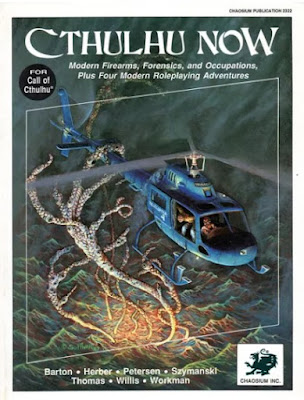To many of you reading this, that probably sounds irrationally anxious and you're probably correct in thinking this, but please allow me to explain where I am coming from. From its inception in March 2015, the House of Worms campaign has been very player-driven. After its initial kick-off, I rarely presented the players with "adventures," as they're usually understood. Instead, I strove to present a variety of situations and opportunities within the world of Tékumel that the players, through their characters, could either pursue or not, as they desired. Further, if the players wanted to pursue other opportunities, ones I'd not immediately considered, that was fine too. Truth be told, I prefer it when the players do most of the heavy lifting for the campaign, because I am by nature a lazy referee. Plus, it's been my experience that allowing the players to do their own thing is one of the keys to campaign longevity.
Over the past eight years, House of Worms has chugged along very smoothly, flitting from one situation to the next according to the interest of the players. Sometimes, the players have had clear and obvious goals, such as return home after a magical mishap hurled them far away, but most of their goals over the years have been much more open-ended and elusive. One of the advantages of this is that it's given me lots of opportunities to show different parts of Tékumel to them through play. I feel that's where a rich and detailed setting really pays off.
Though the players and their interests are the main drivers of the campaign, that doesn't mean I don't have ideas of my own, ideas that I'm interested in exploring through play. A good example of this concerns the nature of the gods of Tékumel, including their natures and purposes with regards to lesser beings. Looking back over the course of the last eight years, I now recognize that this has been an important underlying element of it, with multiple instances of divine invention, encounters with computer "gods", and deity-centered mysteries informing the course of its action. Overall, I think this element has not only helped keep everyone interest but has also helped to make the House of Worms feel distinct from other fantasy campaigns I've refereed. There's a sense that the characters are slowly unraveling some of the bigger mysteries of Tékumel, which is heady stuff.
And that's precisely the source of my occasional worries. Over the course of the campaign, I've given quite some thought to these questions and have come to some tentative conclusions. At any given moment, I'm happy with them. Indeed, I often find them genuinely clever and compelling – to me, if no one else. These conclusions inform my approach to the characters' actions; they're part of the slowly emerging truths of Tékumel. So far, the players have responded well to them, but there's a part of me that worries, "Have I gone too far? Have I ruined this campaign that we've all enjoyed for nearly a decade?"
My anxiety is based, in large part, on the fact that, as I reveal more and the characters come to understand more, I am changing the setting in various ways, or at least changing the players' perspective on it. A few sessions ago, one of the players commented that, in light of new things his character had learned, that character would have to re-evaluate what he believes and wants to do. The player didn't say this ruefully – far from it, in fact. Nevertheless, there was a sense that the character had lost some of his innocence; he could no longer look at Tékumel as he once knew it. This was definitely a moment of growth for the character, but it is also signaled that the campaign had rounded a particular corner and there was no going back.
Have any other referees felt similarly about their campaigns? Have you ever felt that you'd introduce something into a campaign that had changed things in such a way that you worried it might do lasting violence to the campaign? Or is this just another of my overthinking of things?















